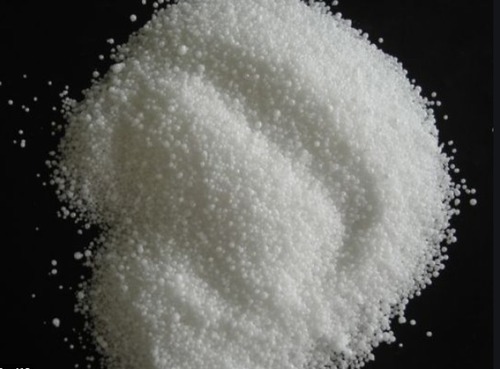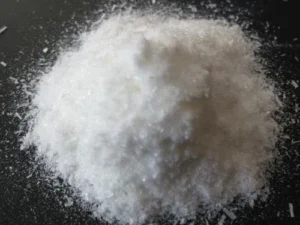Description
Palmitic Acid: A Ubiquitous Fatty Acid with a Complex Role
Palmitic acid, also known as hexadecanoic acid, is one of the most common saturated fatty acids found in animals and plants. Its prevalence in our diets and bodies makes it a critical player in various biological processes. However, its role is complex, with both potential benefits and drawbacks depending on the context and individual.
What is Palmitic Acid?
Palmitic acid is a 16-carbon saturated fatty acid, meaning it has no double bonds in its carbon chain. This structure allows it to solidify at room temperature, contributing to the texture and stability of many fats and oils. It derives its name from palm oil, where it is found in abundance.
Sources of Palmitic Acid:
Palmitic acid is widely distributed in both plant and animal sources. Key sources include:
- Palm Oil: As the name suggests, palm oil is a significant source, containing around 40-45% palmitic acid.
- Dairy Products: Butter, cheese, and whole milk products contain substantial amounts.
- Meat: Beef, poultry, and pork all contain palmitic acid.
- Coconut Oil: Although primarily known for its medium-chain triglycerides, coconut oil also contains a significant amount of palmitic acid.
- Other Vegetable Oils: Smaller amounts can be found in other vegetable oils like olive oil and cocoa butter.
Role in the Body:
Palmitic acid plays several vital roles within the human body:
- Energy Storage: As a fatty acid, it’s a major component of triglycerides, the primary form of stored energy.
- Cell Membrane Structure: It contributes to the structure and fluidity of cell membranes.
- Precursor to Other Fatty Acids: The body can use palmitic acid as a building block to synthesize other fatty acids.
- Signaling Molecule: Palmitic acid can act as a signaling molecule, influencing various cellular processes.
Potential Health Implications:
While essential for various bodily functions, excessive palmitic acid intake has been linked to some potential health concerns:
- Elevated LDL Cholesterol: Studies have shown that high intakes of palmitic acid can raise Low-Density Lipoprotein (LDL) cholesterol, often referred to as “bad” cholesterol, which can increase the risk of cardiovascular disease. However, this effect is complex and can be influenced by other dietary factors.
- Insulin Resistance: Some research suggests a link between high palmitic acid intake and insulin resistance, a condition where cells become less responsive to insulin, potentially leading to type 2 diabetes.
- Inflammation: Certain studies have indicated that palmitic acid can promote inflammation in some individuals.
The Controversy and Nuances:
The role of palmitic acid in health is often debated and misunderstood. It’s important to consider the following:
- Context Matters: The effects of palmitic acid depend on the overall dietary context. A balanced diet rich in fruits, vegetables, and other healthy fats can mitigate the potential negative impacts.
- Individual Variability: People respond differently to dietary fats, including palmitic acid, based on genetics, lifestyle, and other factors.
- More Than Just Palmitic Acid: Focusing solely on palmitic acid is an oversimplification. It’s crucial to consider the entire fat profile of the food and the overall diet.
- Processing and Refining: The type of fat or oil, i.e., refined vs. unrefined, might influence its impact on health.
Recommendations and Considerations:
- Limit Processed Foods: Processed foods often contain high amounts of palmitic acid, particularly in the form of palm oil.
- Choose Whole, Unprocessed Foods: Prioritize whole, unprocessed foods like fruits, vegetables, lean proteins, and whole grains.
- Focus on a Balanced Diet: A Mediterranean-style diet, rich in healthy fats like olive oil, avocados, and nuts, is generally considered beneficial for cardiovascular health.
- Read Food Labels: Pay attention to the ingredients list and the total fat content of food products.
- Consult with a Healthcare Professional: If you have concerns about your cholesterol levels or other health conditions, consult with a doctor or registered dietitian.
Conclusion:
Palmitic acid is a common and essential fatty acid that plays various roles in the body. While it’s a natural component of many foods, excessive intake, particularly from processed sources, may contribute to health risks. By understanding the sources of palmitic acid, its potential effects, and the importance of a balanced diet, individuals can make informed choices to support their overall health and well-being. It’s crucial to remember that the impact of a single nutrient like palmitic acid is influenced by the entire dietary pattern and individual factors.












Reviews
There are no reviews yet.